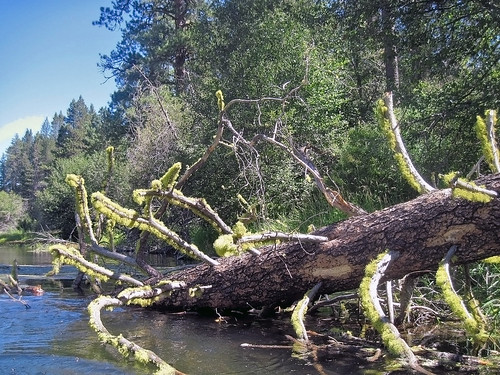
Working collaboratively, the Fremont-Winema National Forest, Klamath Basin Rangeland Trust, Oregon Department of Fish, and Wildlife and Oregon Parks and Recreation Department are completing a restoration project designed to improve redband trout spawning and rearing habitat on the Lower Williamson River in south central Oregon.
The redband trout are indigenous to central Oregon. They’re a subspecies of rainbow trout and steelhead and are adapted to the arid conditions east of the Cascades.
They spawn in rivers and streams during the spring. Cool, clean, well-oxygenated water is necessary for the eggs to survive. The fry emerge from the gravel in June and July and for the most part, they live near where they were spawned.
The Lower Williamson River Fish Habitat Project began earlier this summer when 65 cubic yards of suitable-sized gravel was placed in known spawning areas on the river. The final step of the project calls for some 300 logs to be placed in the river to replace large wood that had been lost over the past century.
Large wood plays many roles in river systems, including providing needed structure for the proper channel conditions in a stream, enhancing the production of aquatic invertebrates - which provide food for the trout - and essential cover for juvenile and adult fish.

“A large helicopter will be used to place three to five pieces of large wood each at approximately 50 stream locations,” said Jared Bottcher, Restoration Director for the Klamath Basin Rangeland Trust.
That wood will come from existing fuels treatment log decks in a nearby state park, natural blow down along both sides of the river within the forest and J-Spears Ranch lands, as well as hazard logs felled to provide safe conditions during project operations.
While the project mimics naturally occurring wood accumulations in the river, it has been designed to maintain current recreation opportunities, such as floating or paddling.
The action plan was completed by the Klamath Watershed Partnership with assistance from local landowners, state and federal agencies and other concerned citizens. Other significant partners include: Trout Unlimited, Klamath Country Flycasters and J-Spears Ranch Company.

